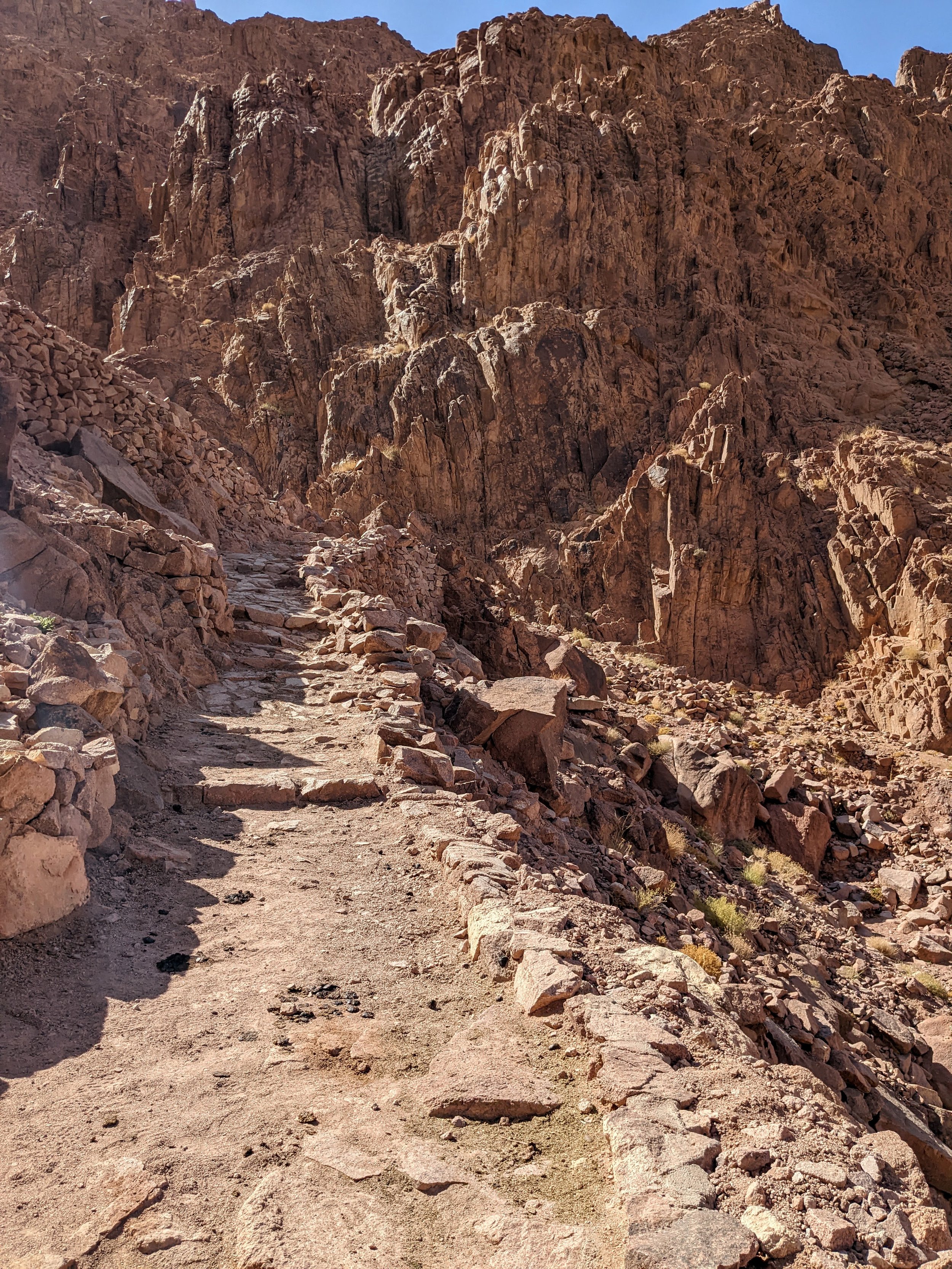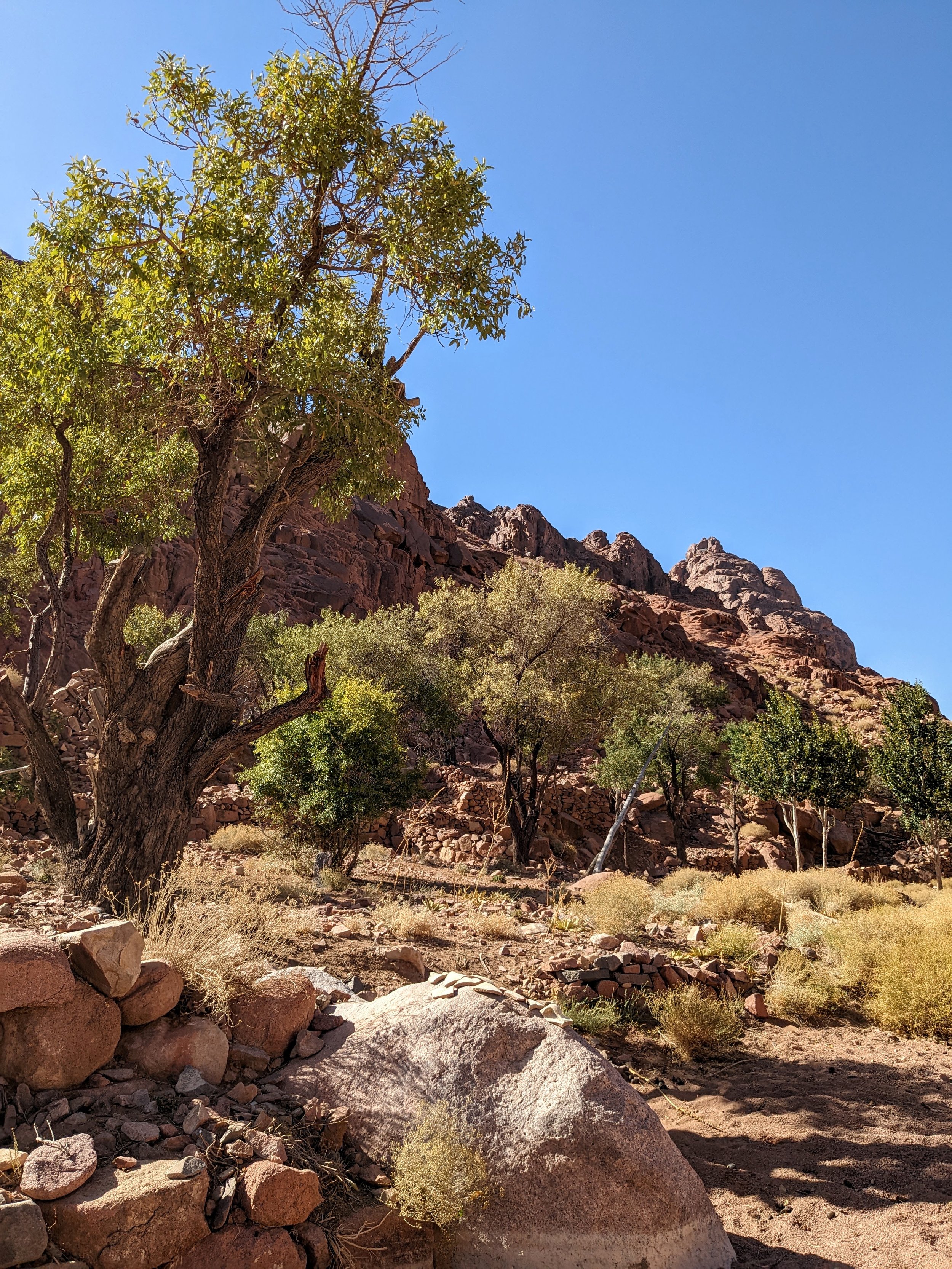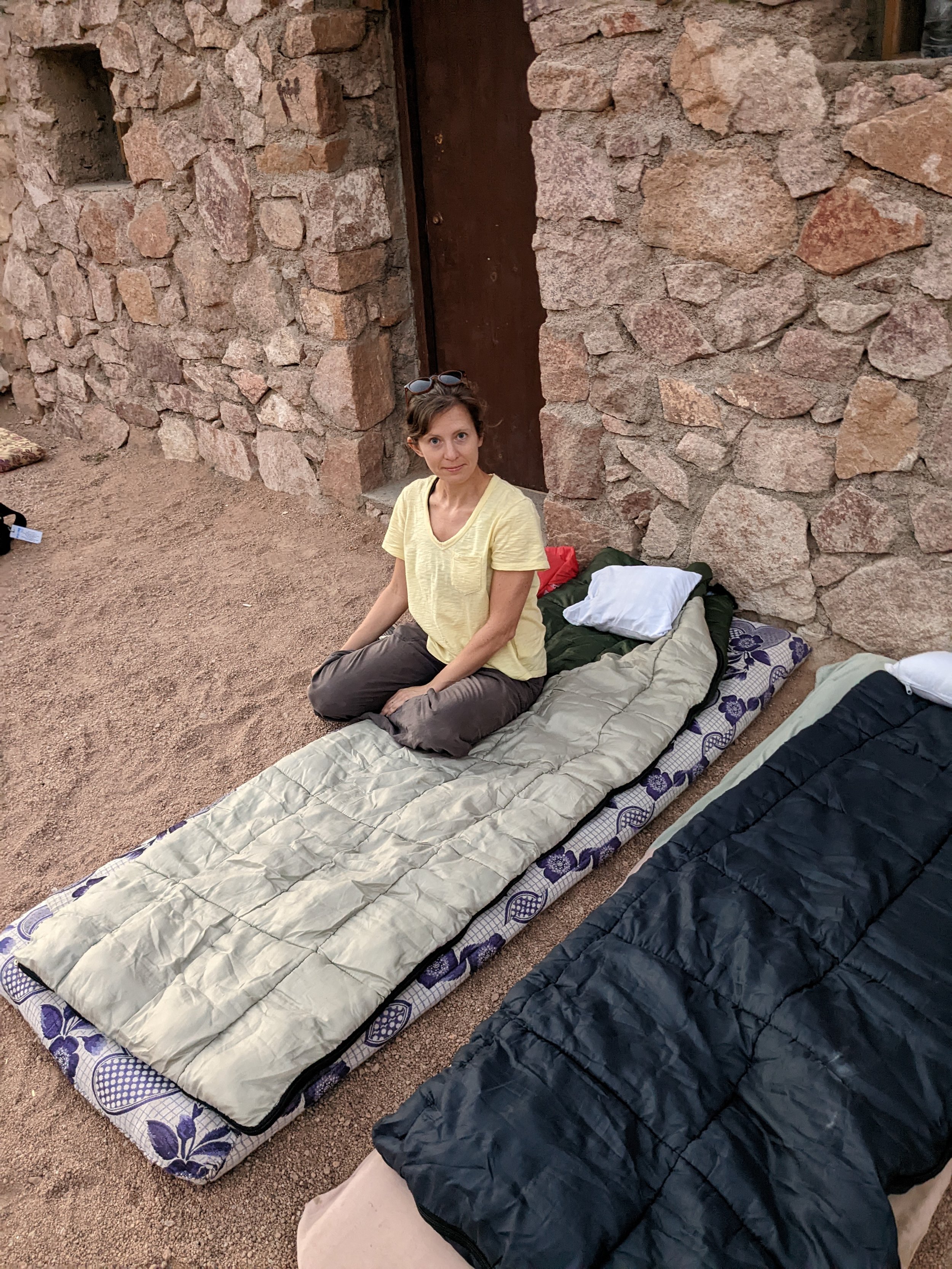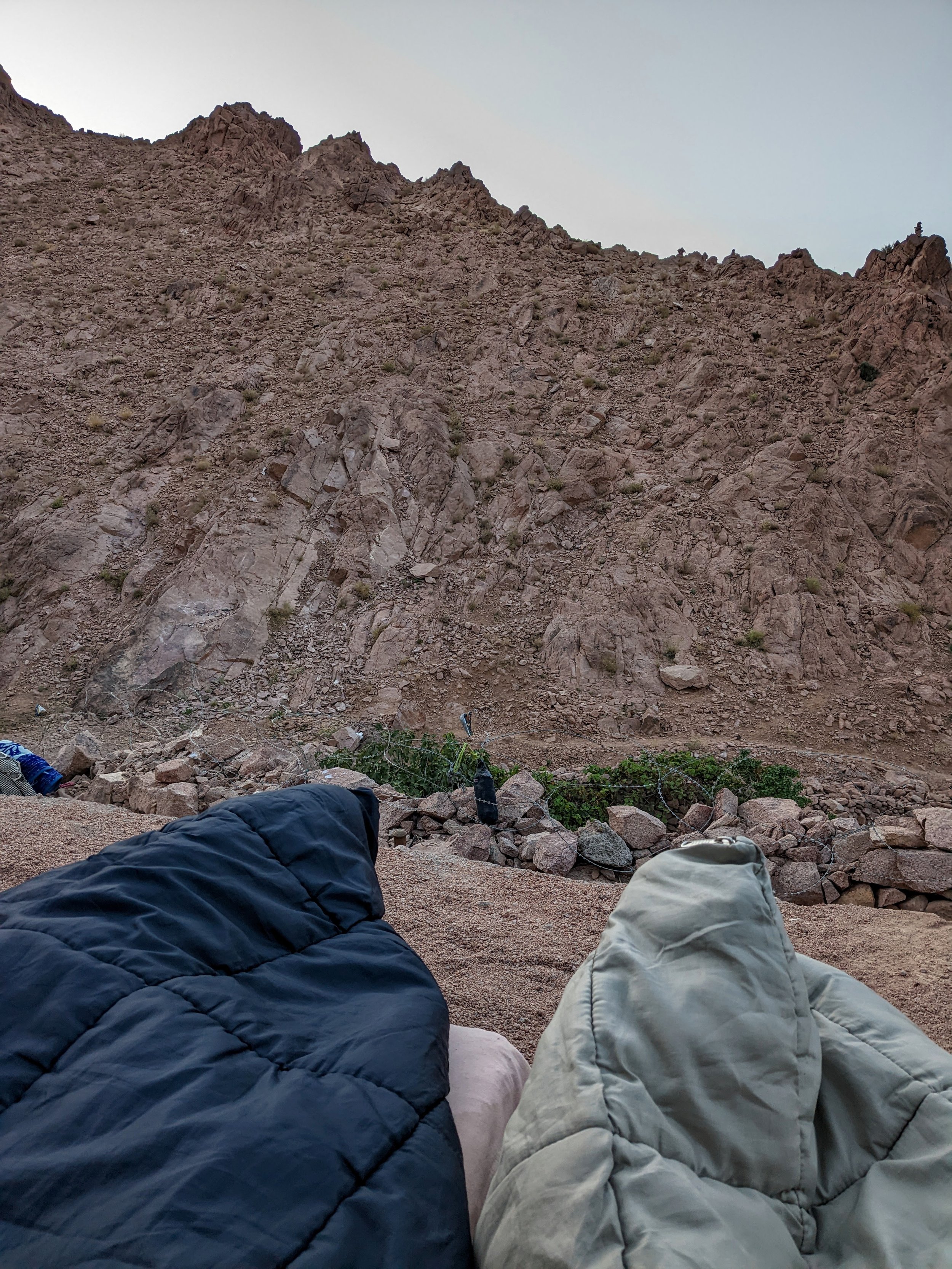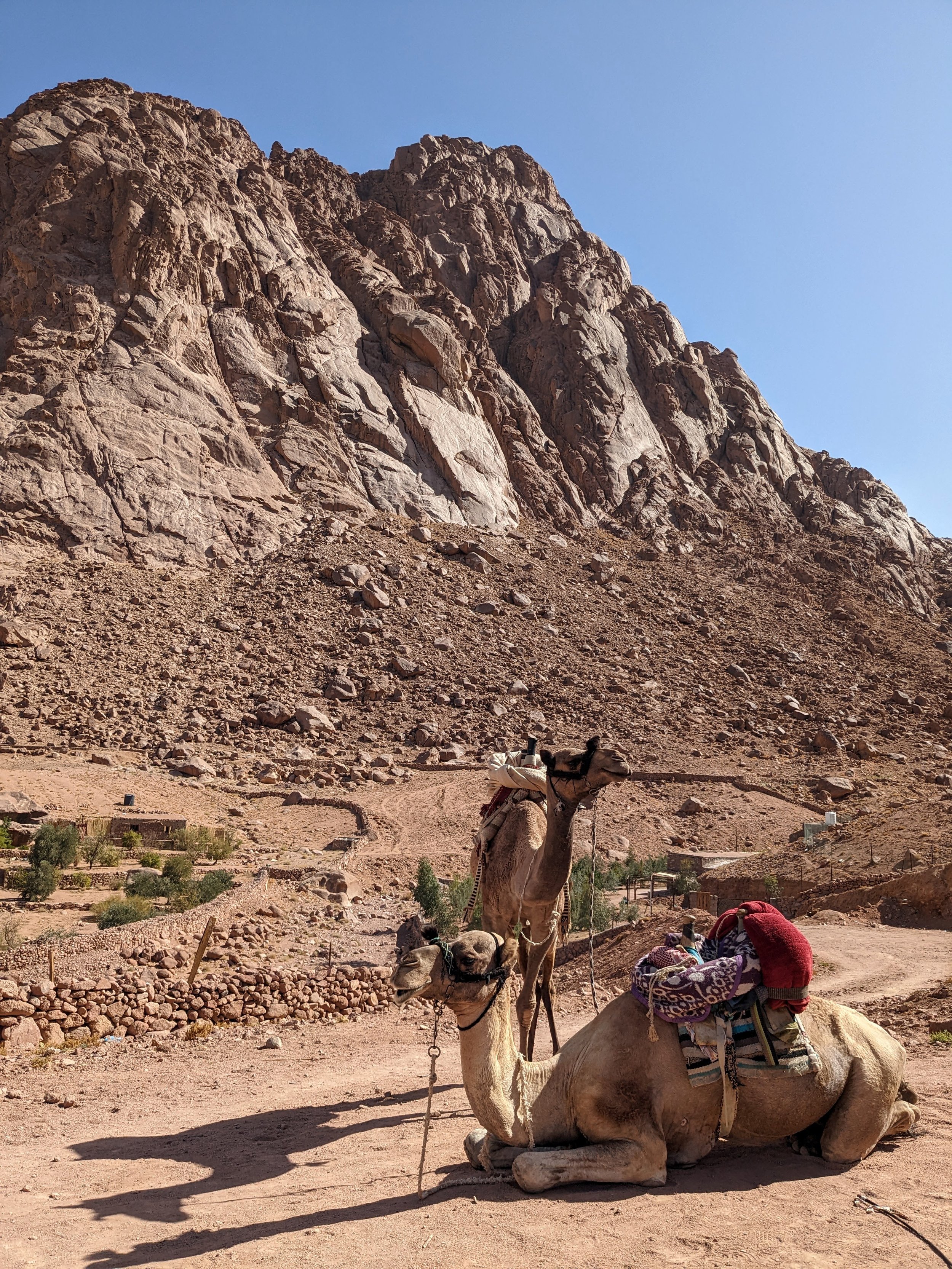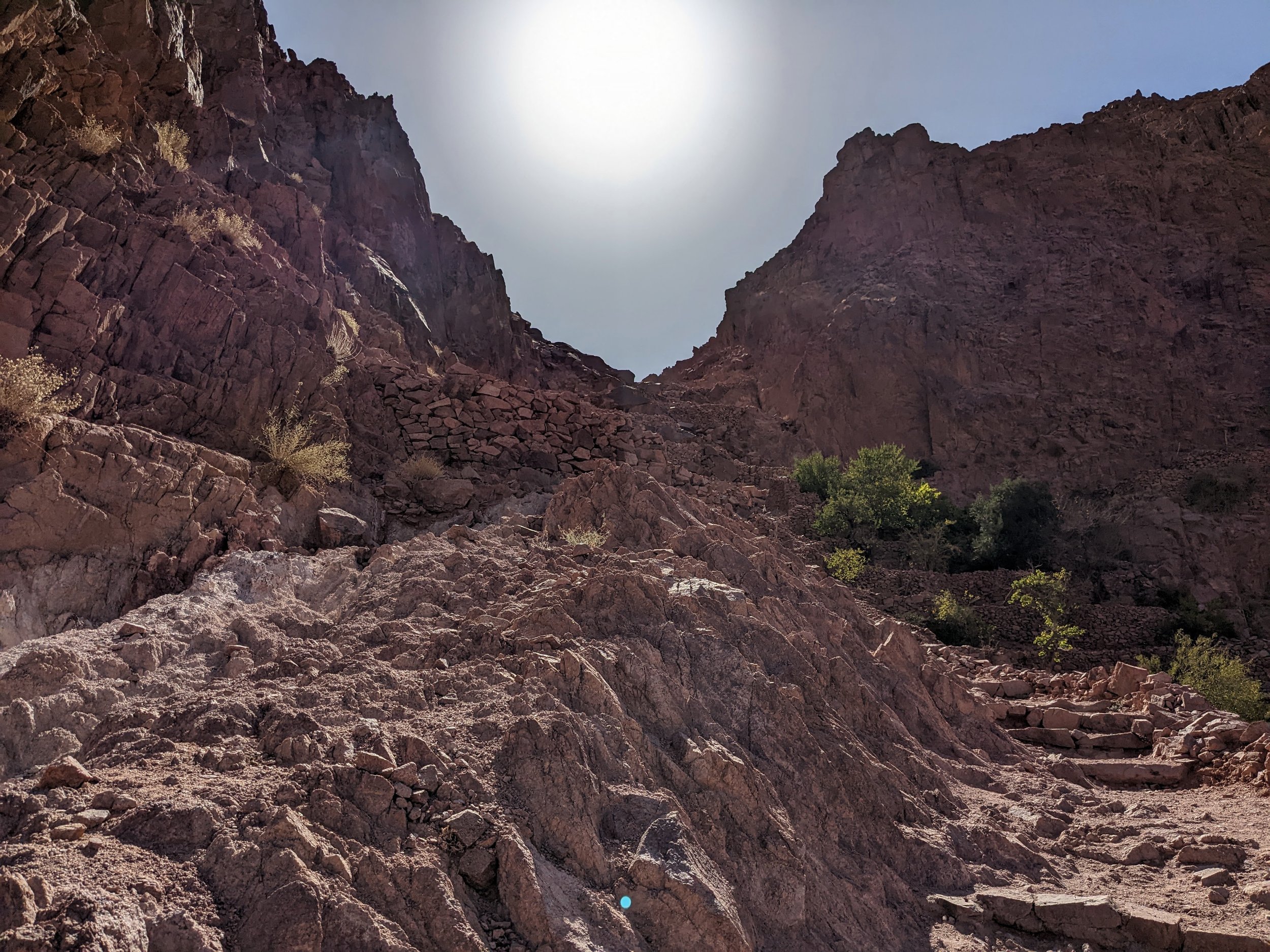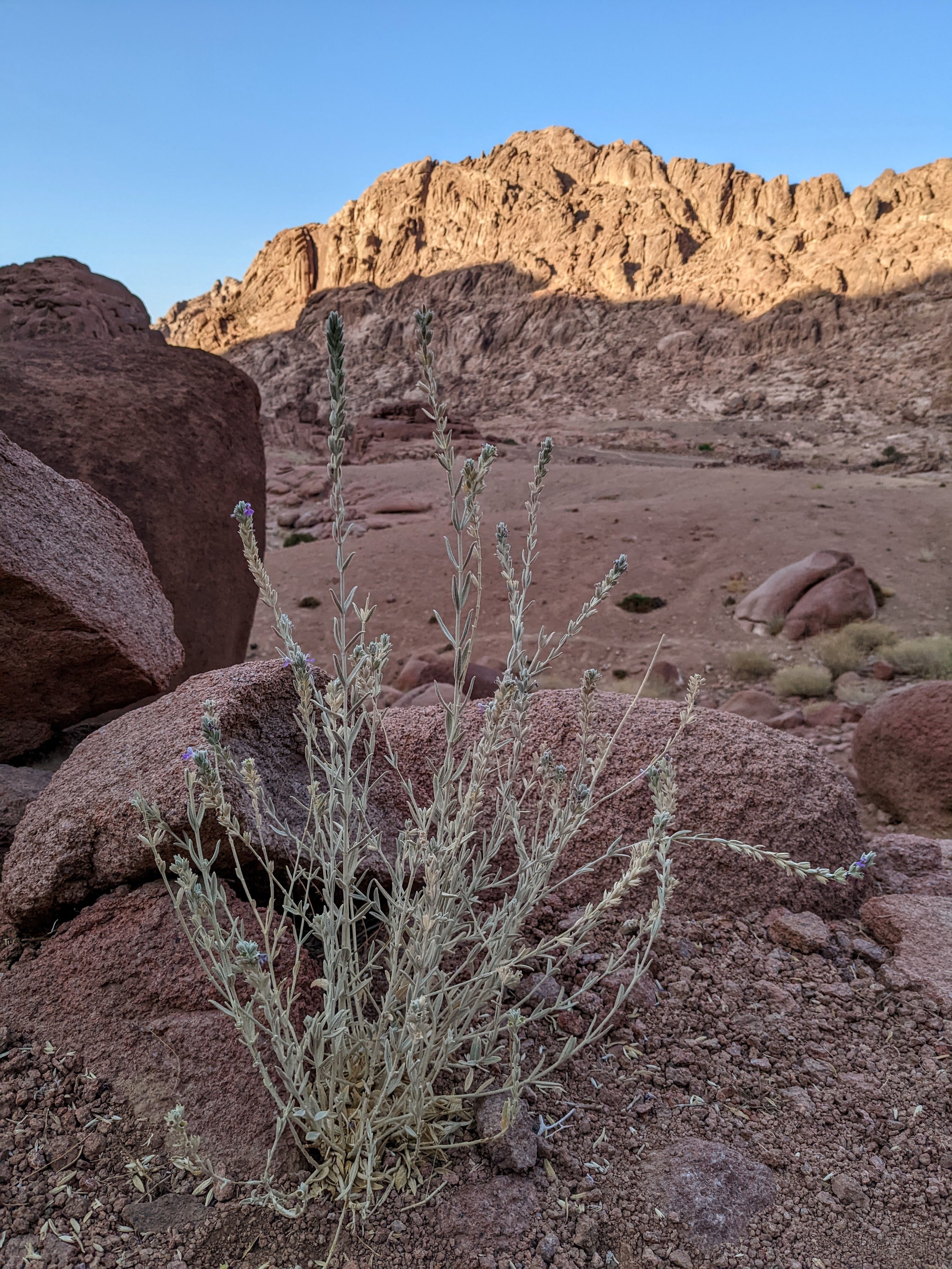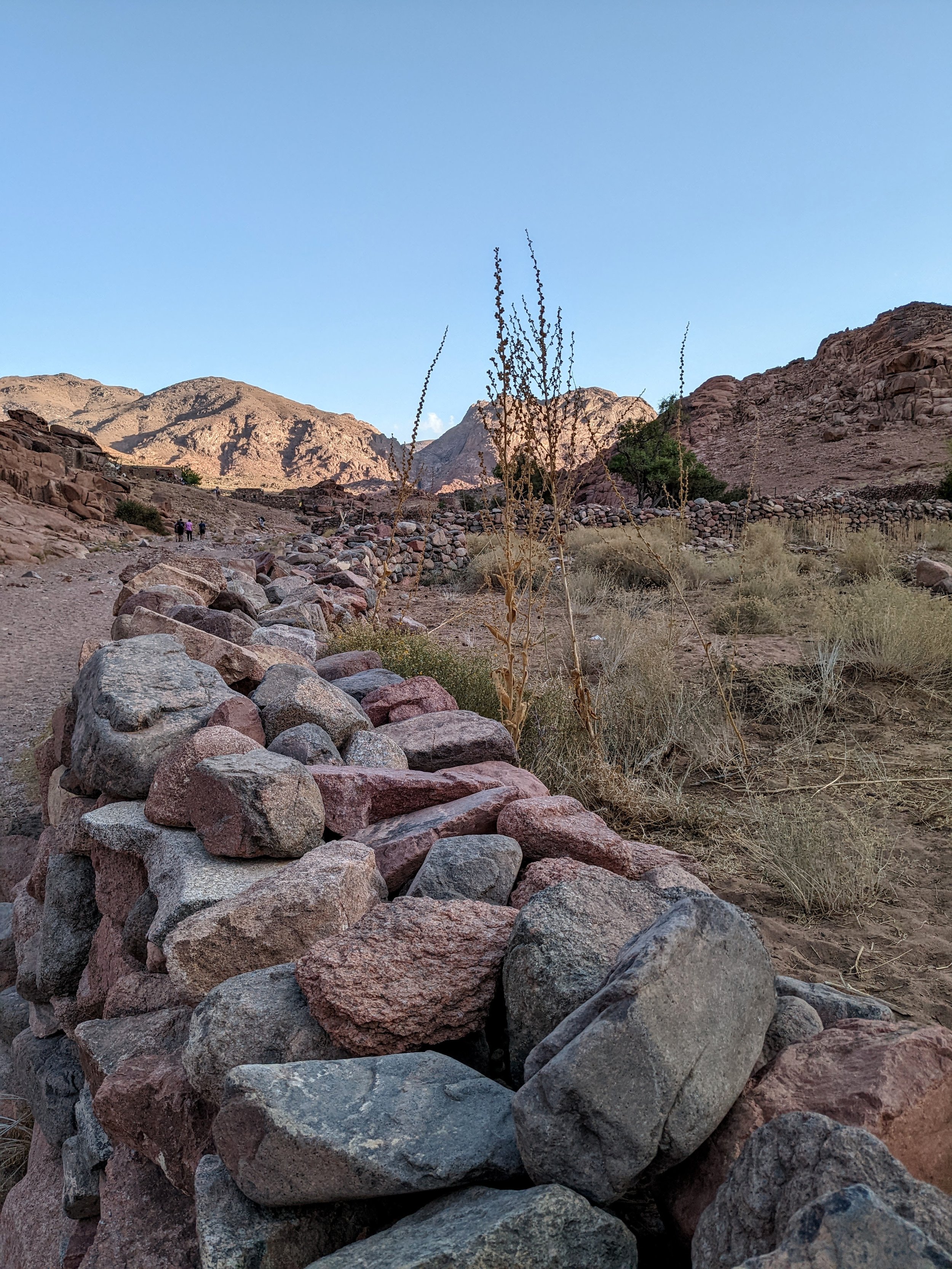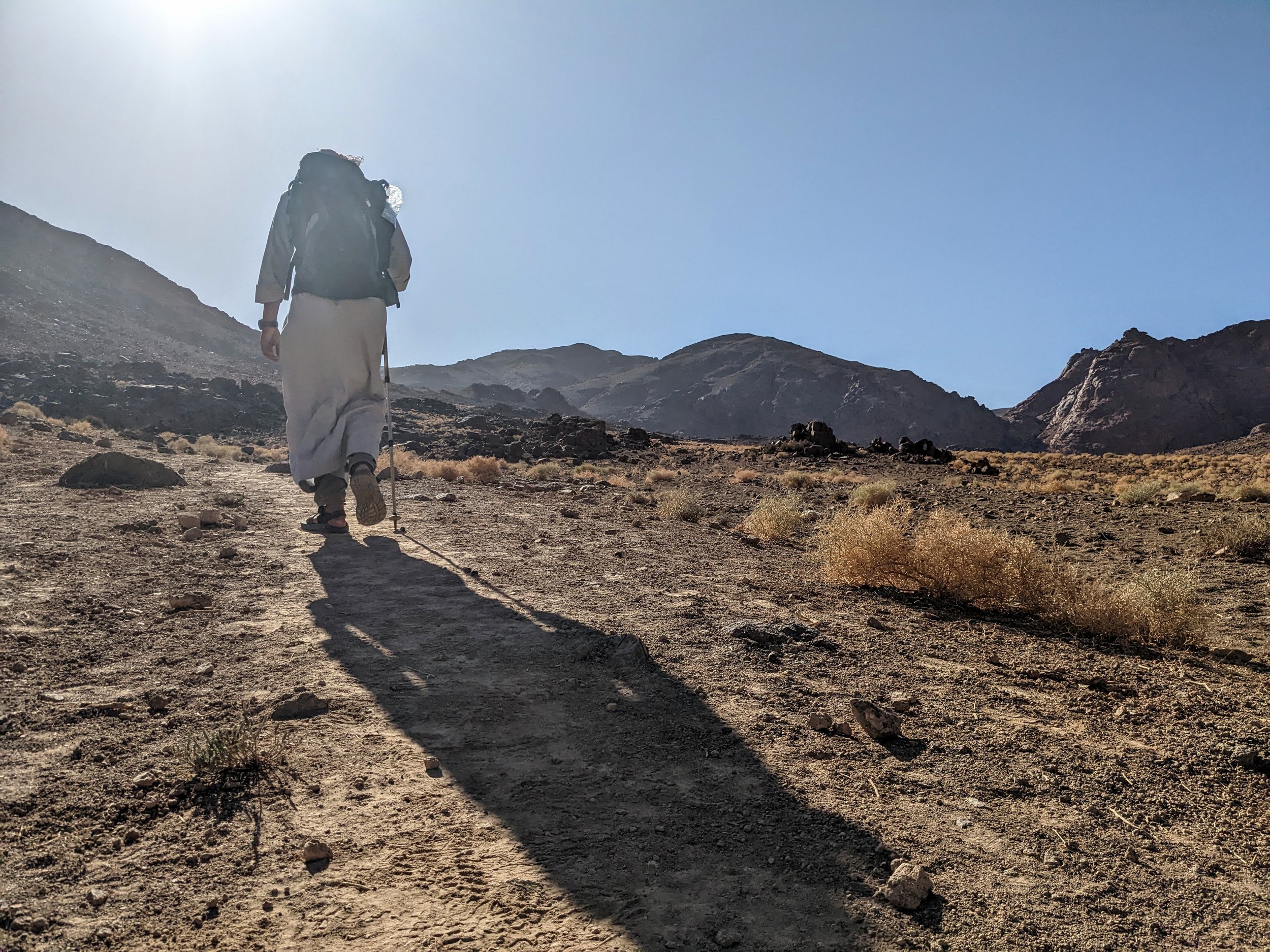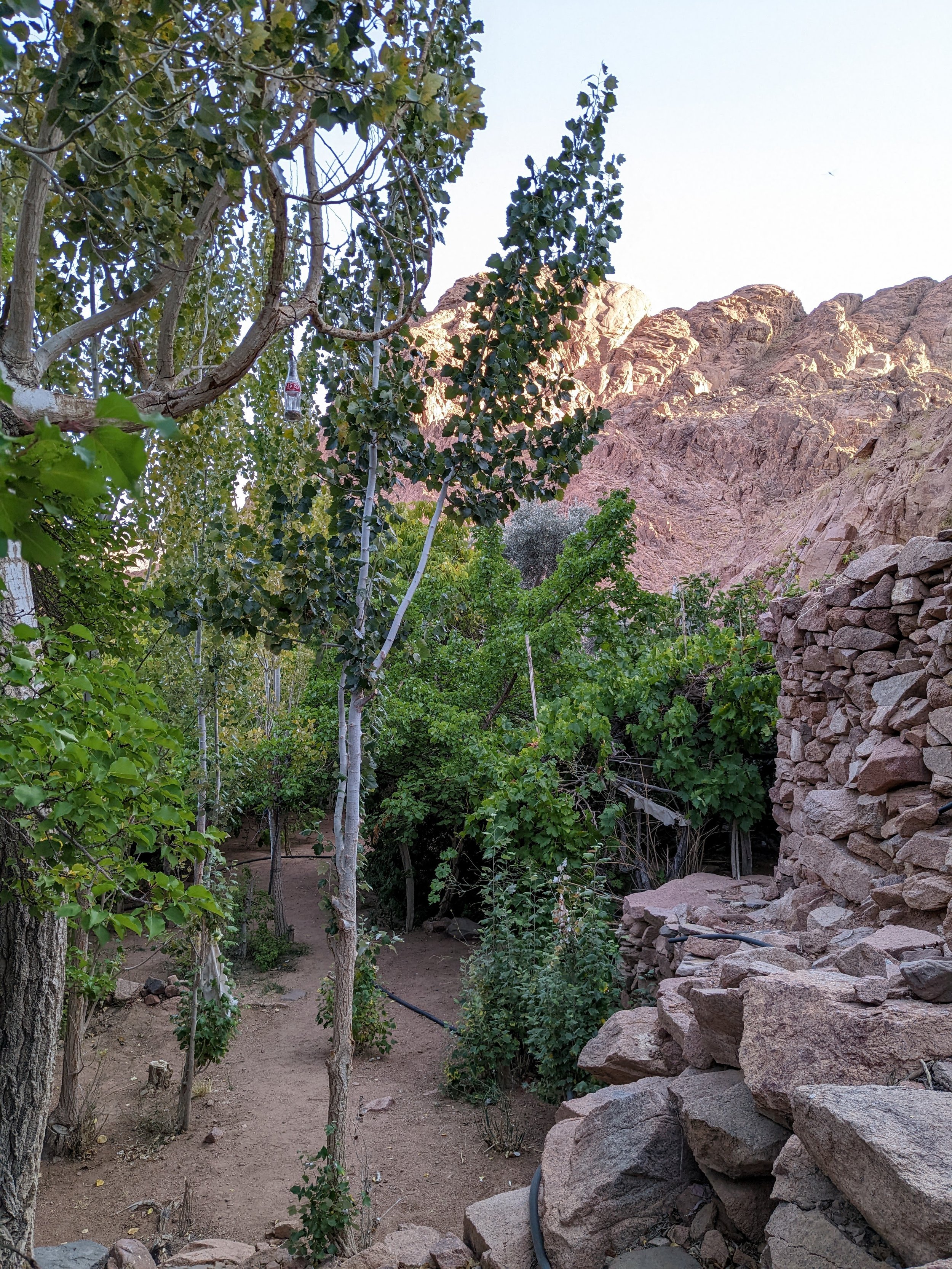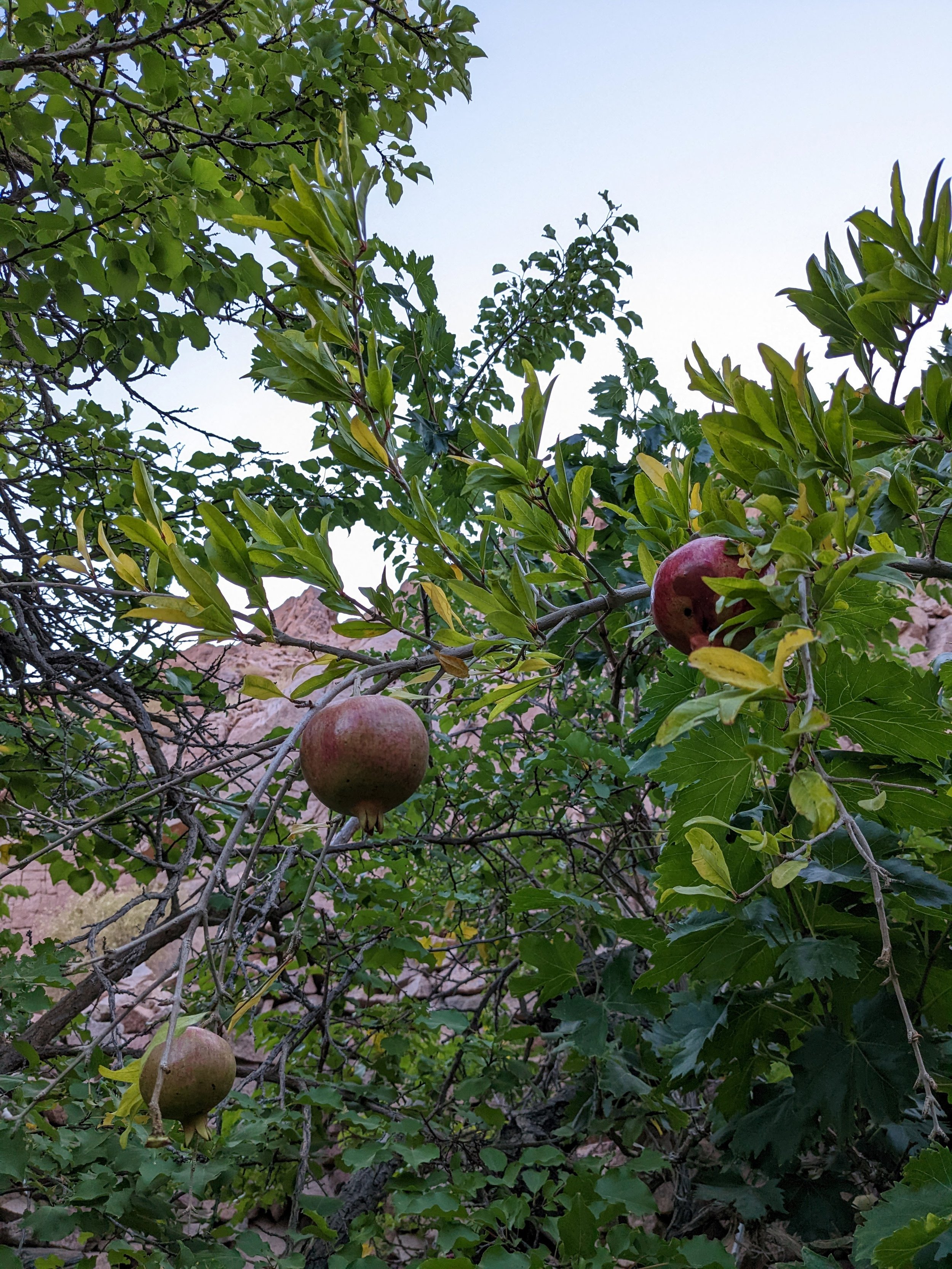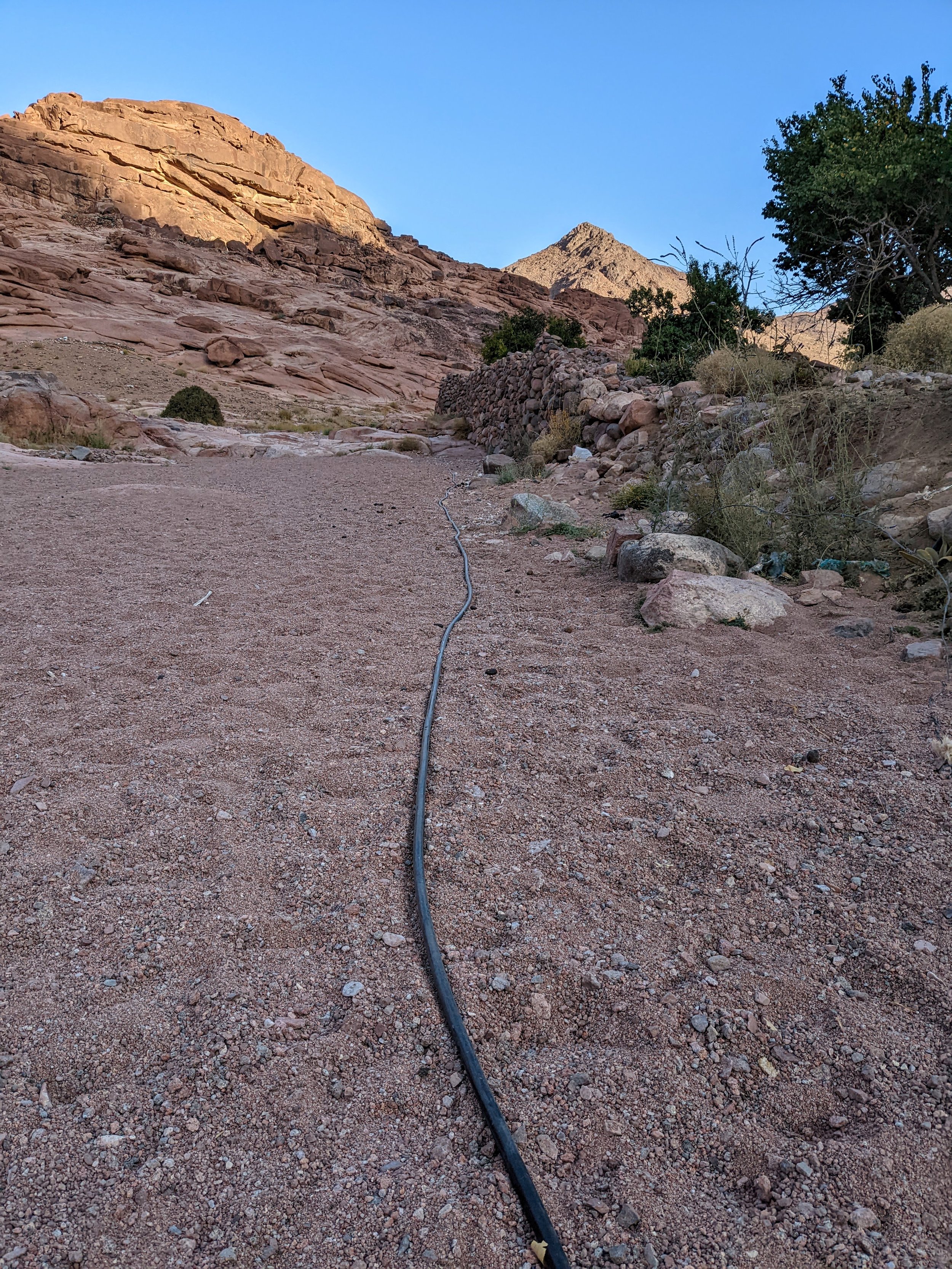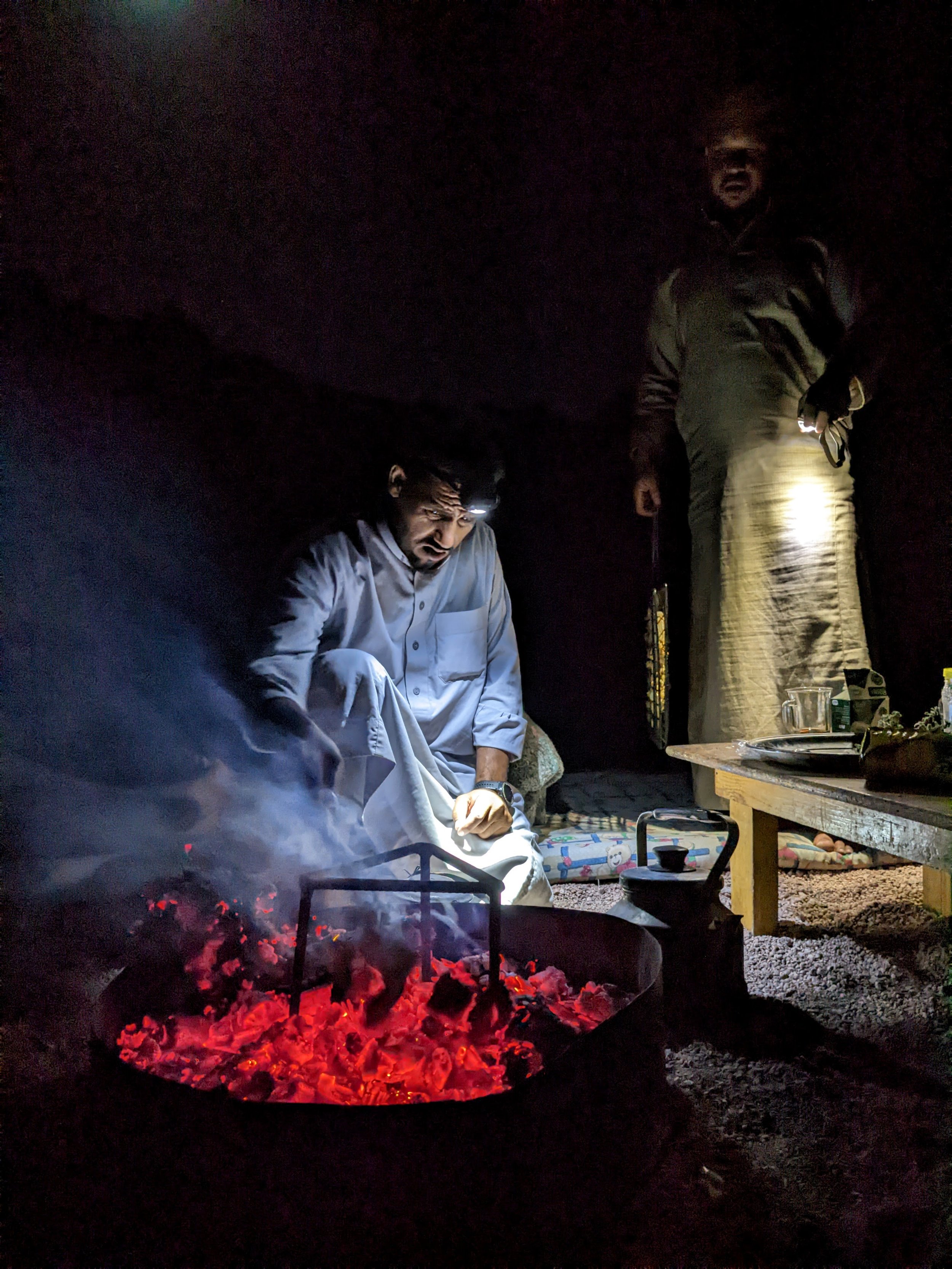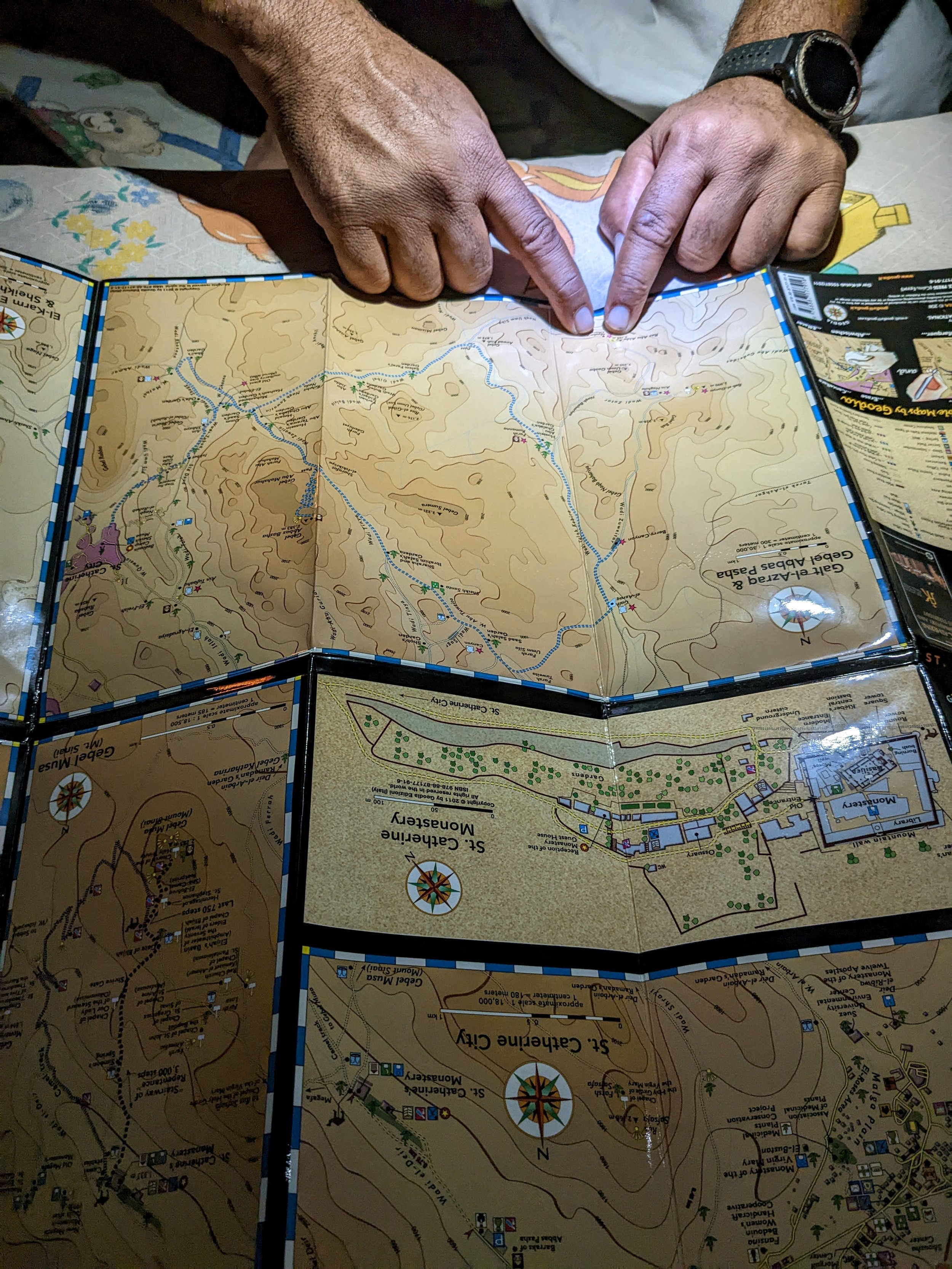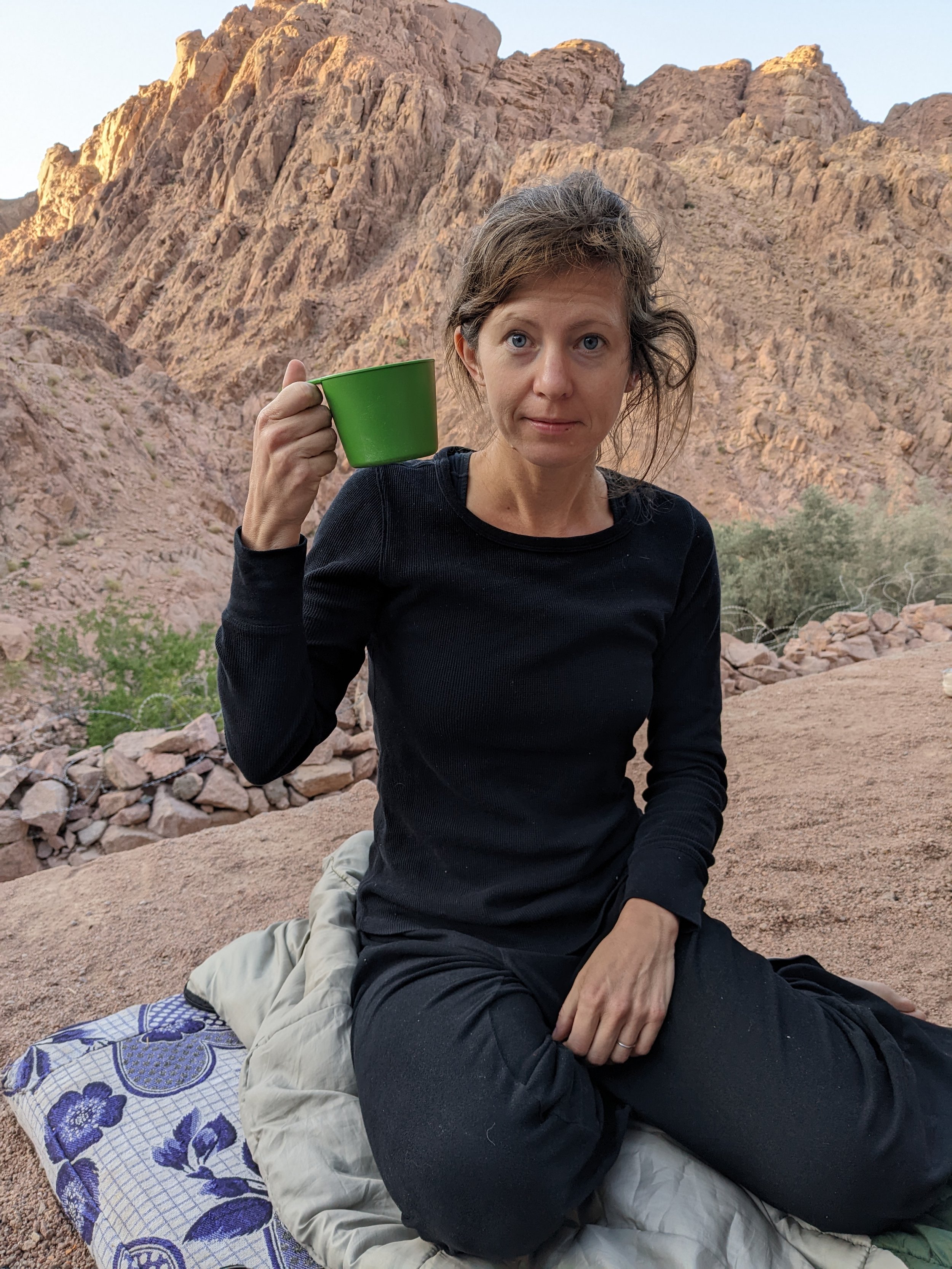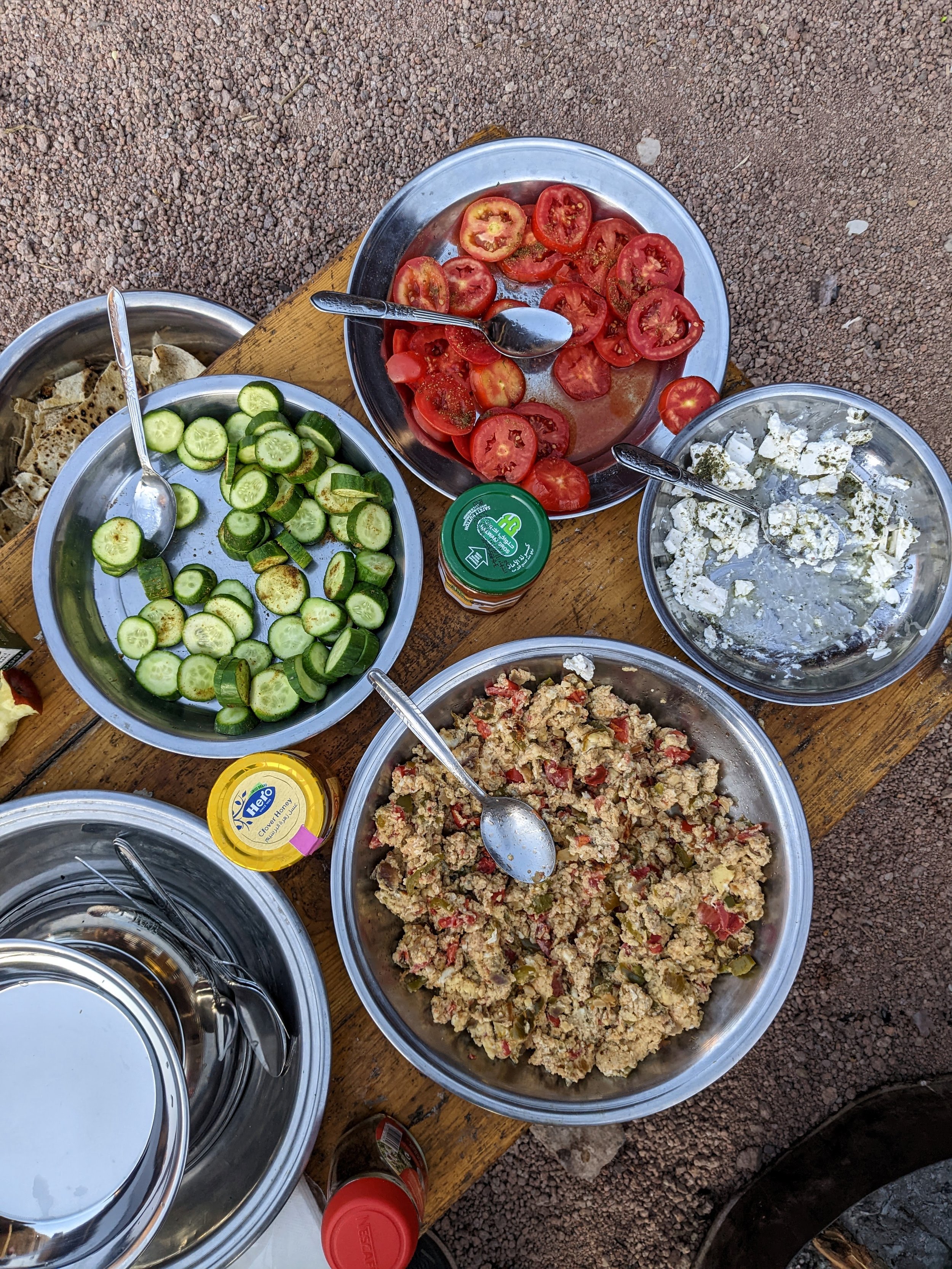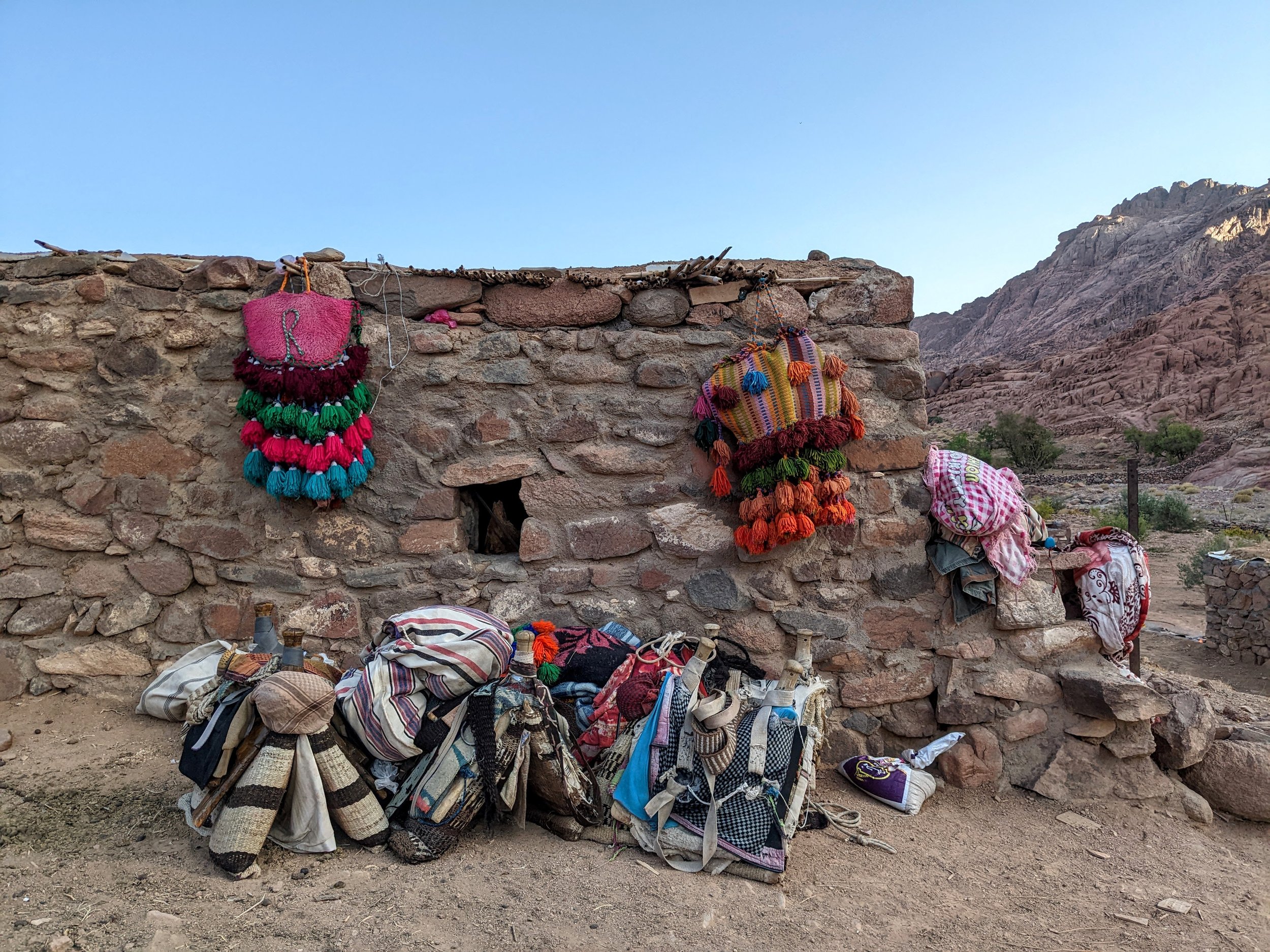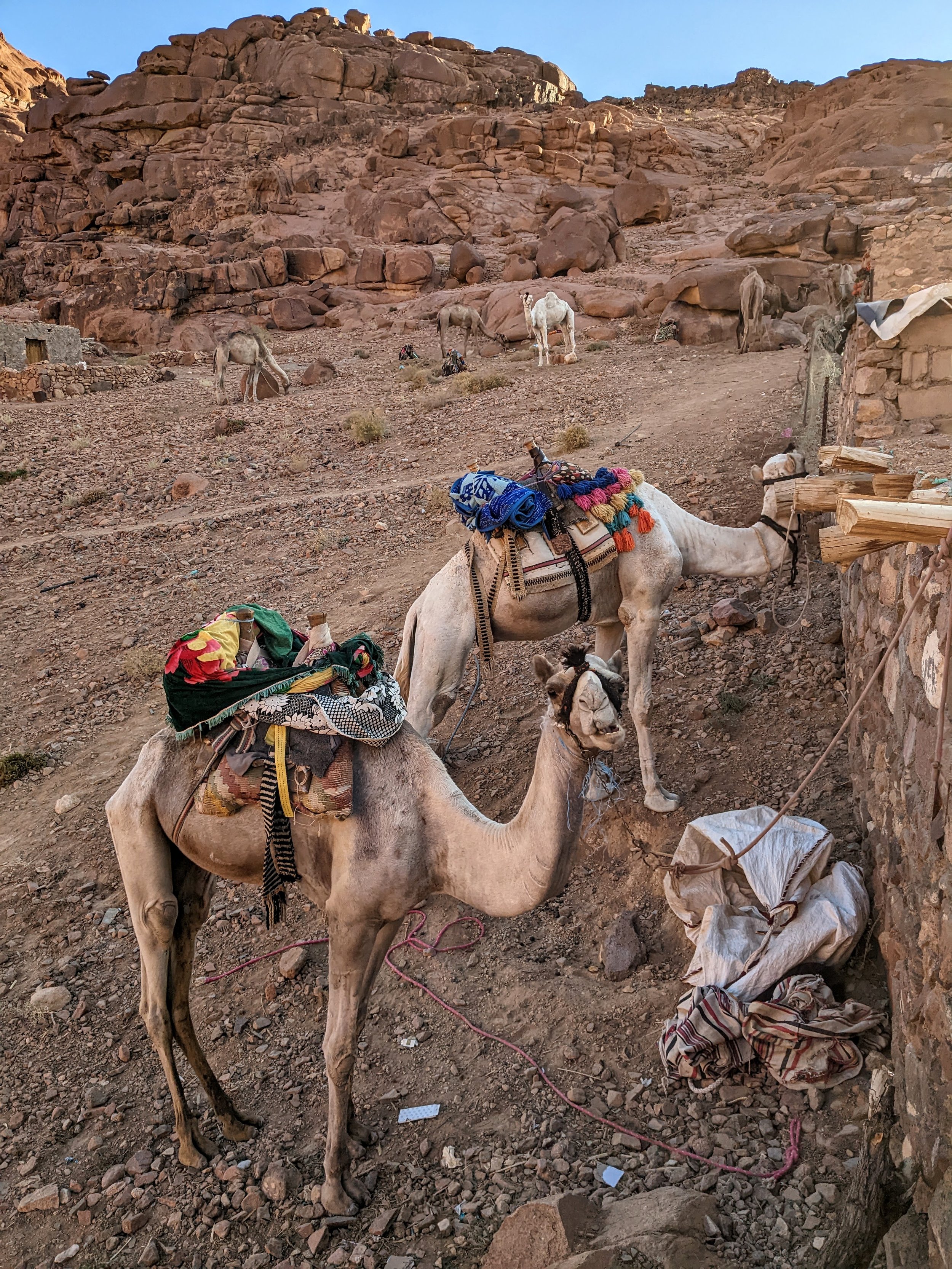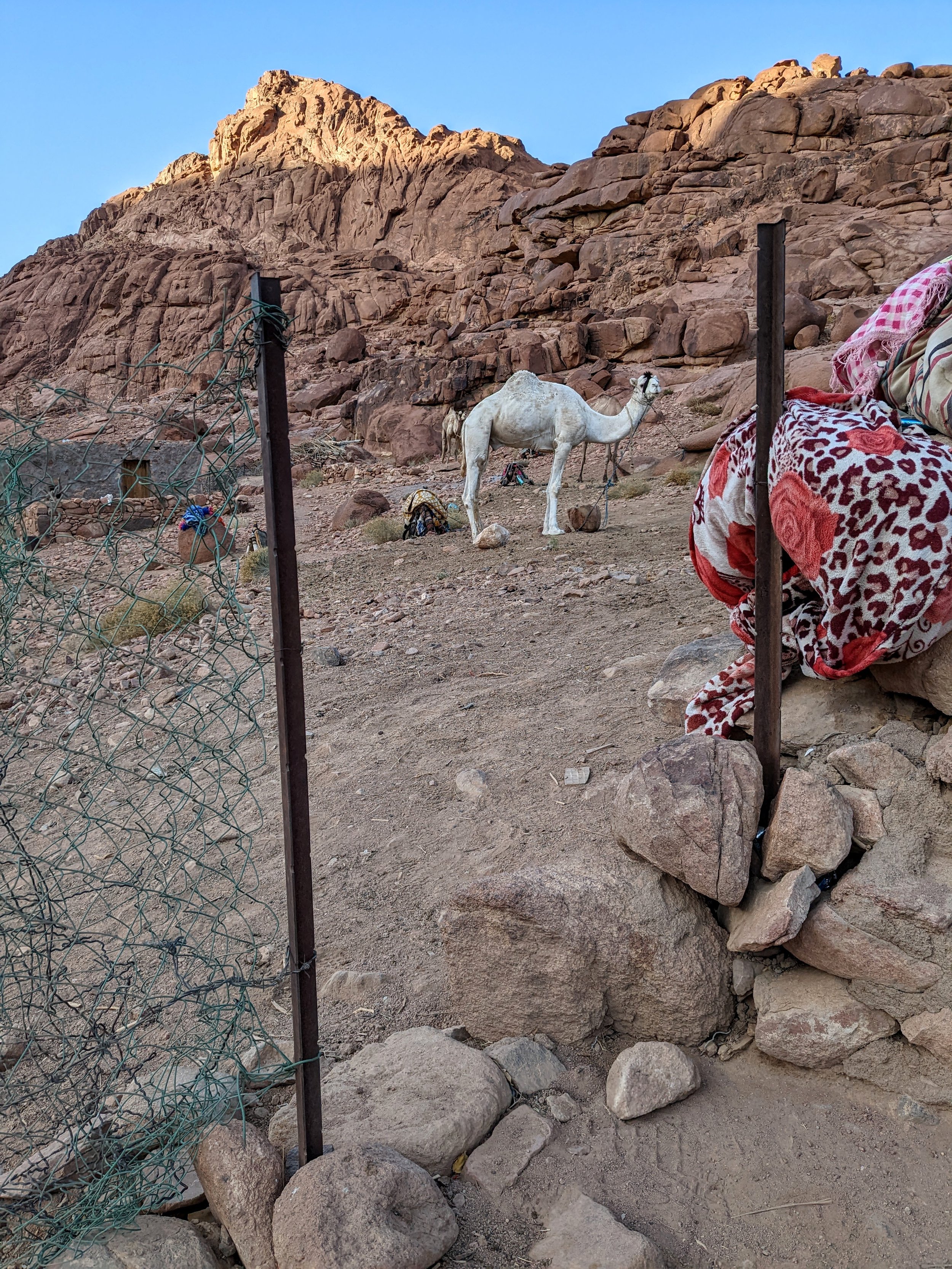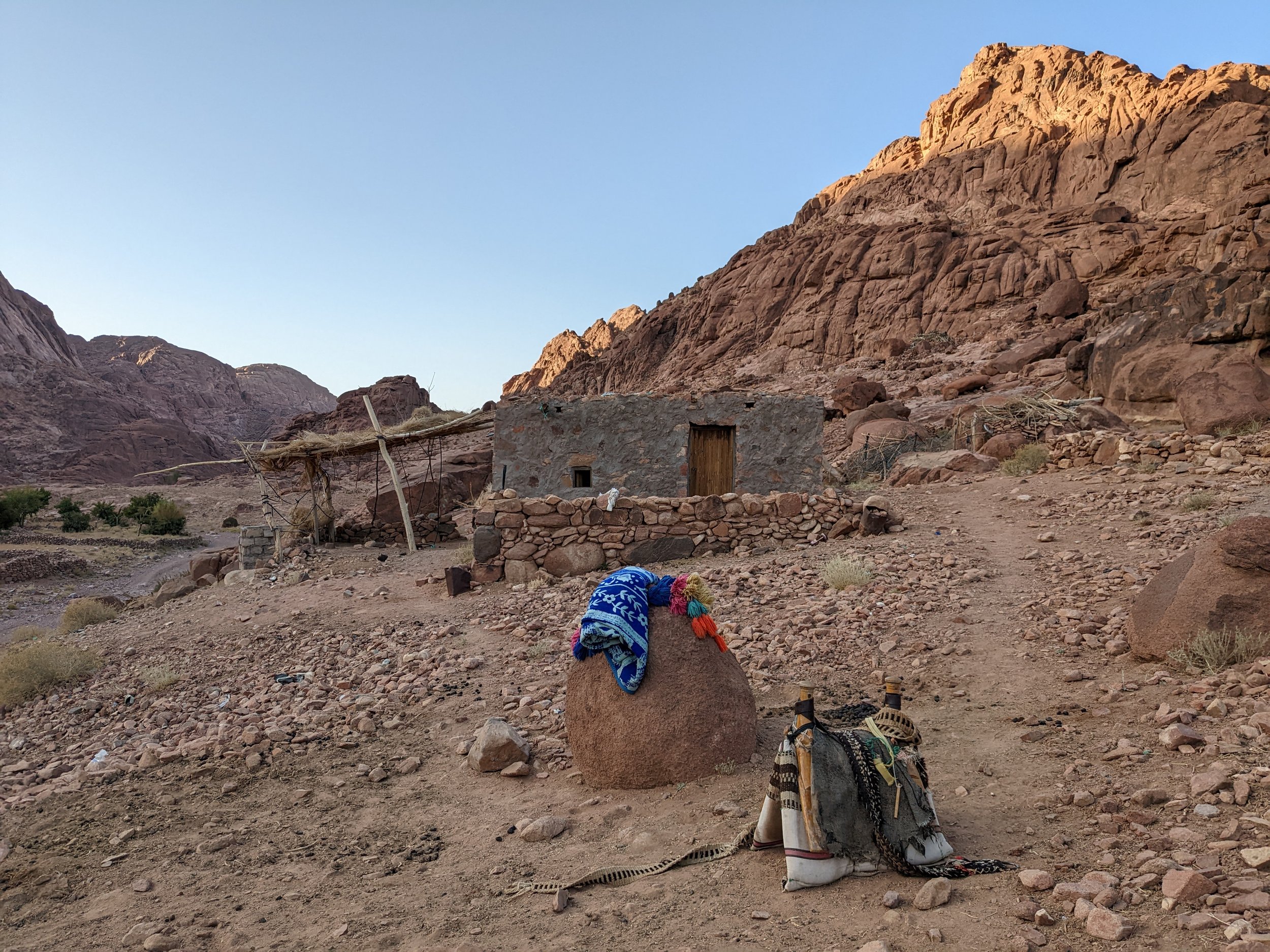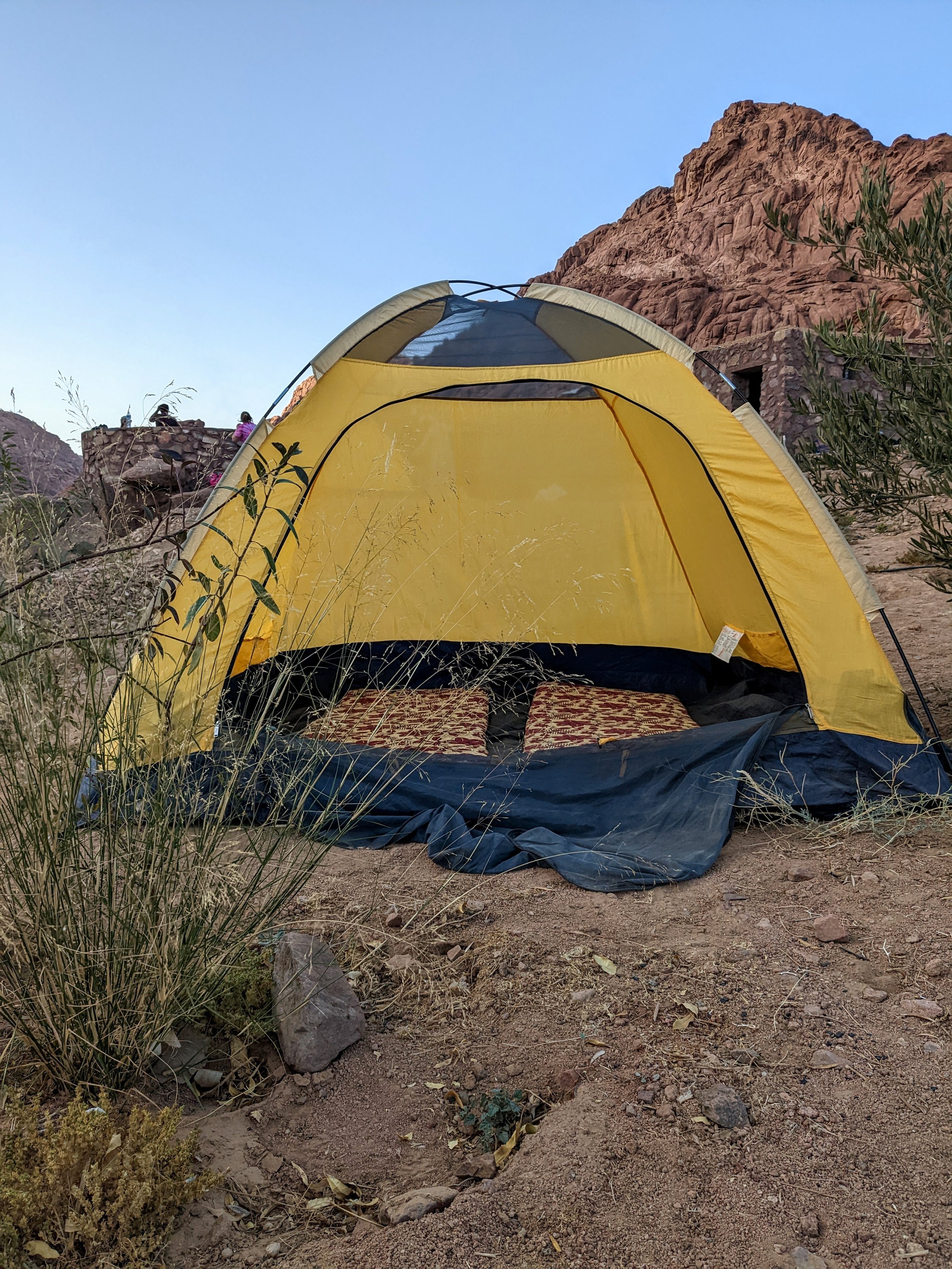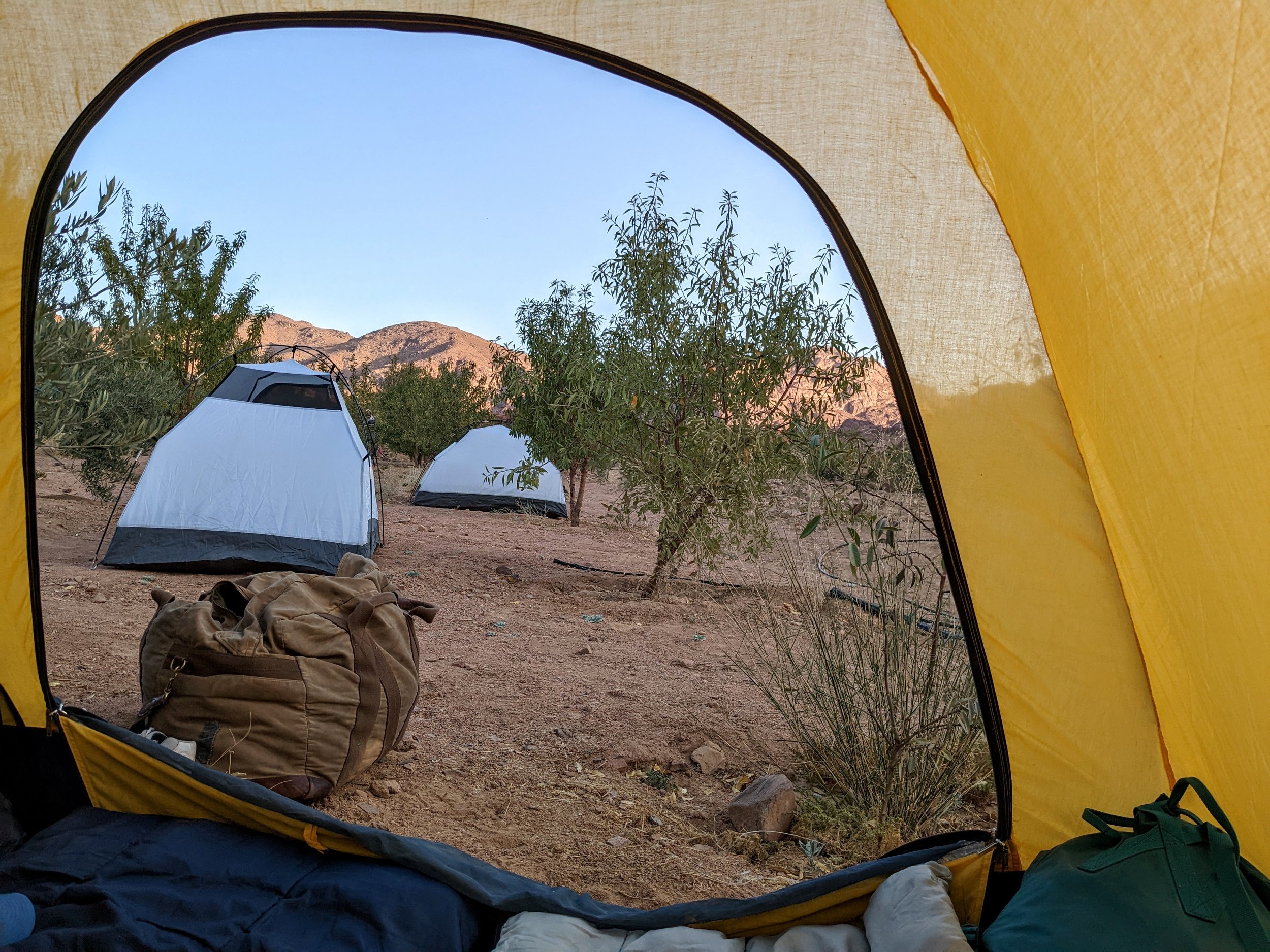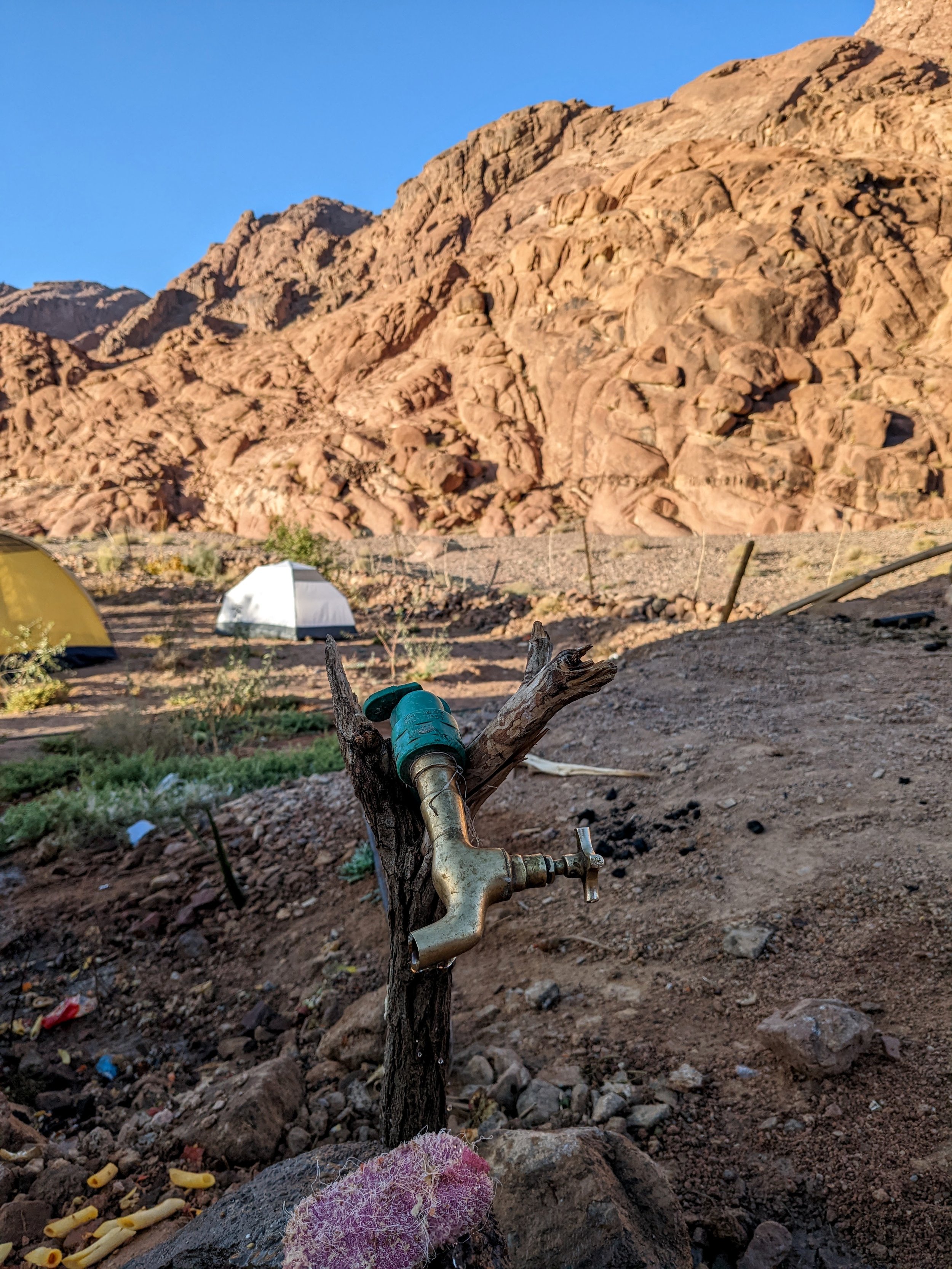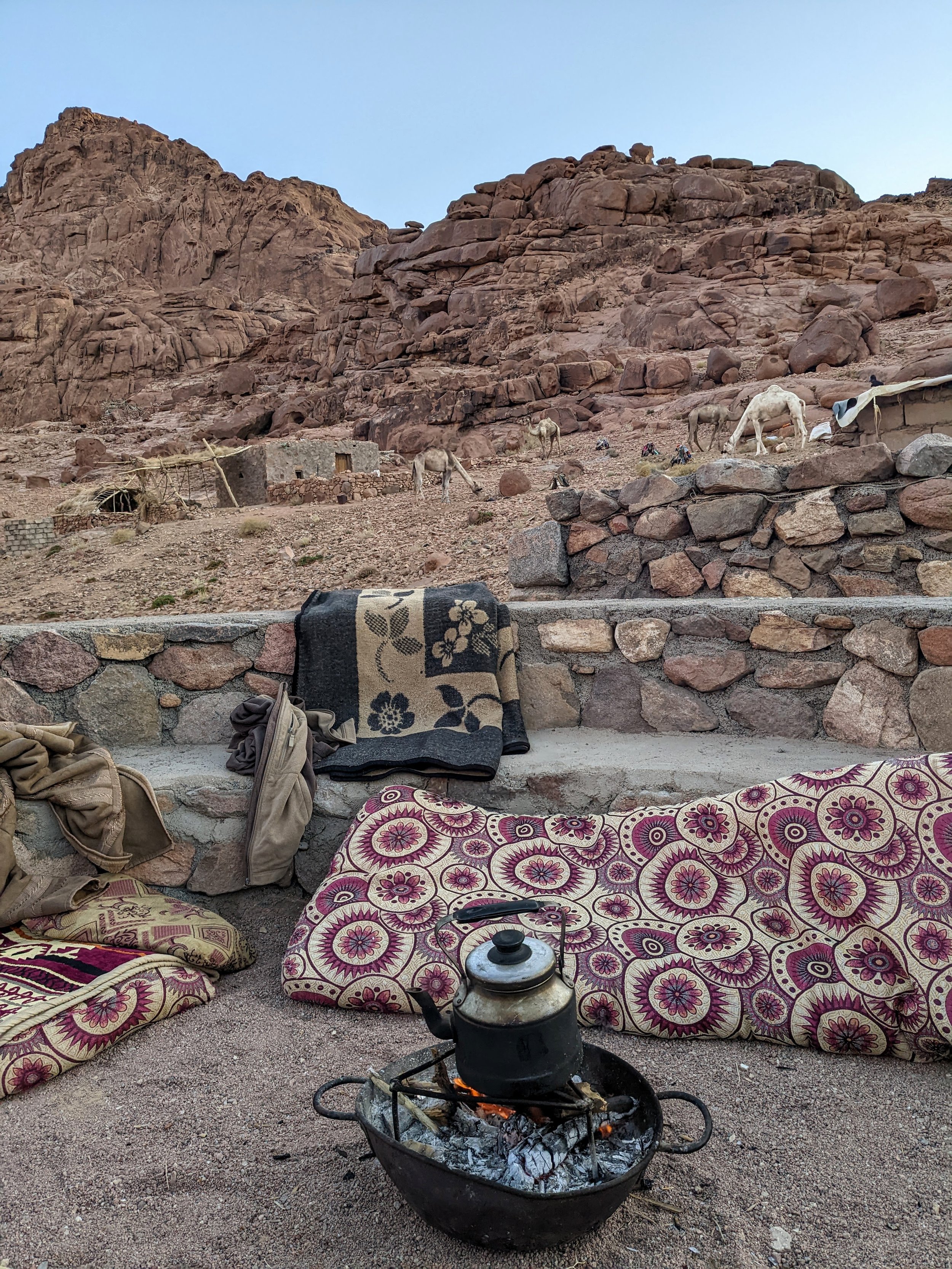the sinai peninsula
My dear friend,
My parents like to tell the story of the first time we went camping together. It’s been retold so many times by now that it’s become not only an essential component of our family lore, but also a crucial part of the way I see myself.
I was five or six years old when we joined family friends at a nearby campsite. All afternoon and early evening, I enthusiastically embraced my first camping experience. I gathered wood, helped set up the tent, unpacked my bag, played in the woods, roasted marshmallows, sang songs by the campfire, and admired the stars. By everyone’s account, I was having a blast.
After I’d been tucked into my sleeping bag, right before I drifted off to sleep in the tent, I posed a question.
“Have they” [referring to our family friends] “ever been camping before?” I asked.
“Oh yes,” my parents assured me. “Lots of times!”
There was a pause long enough for my parents to assume the conversation was over. So they were doubly surprised when I added, in a tone of puzzlement rather than judgment: “But after the first time, why would they ever want to do it again?”
Over the years that I grew up, we never camped again. Even in Yellowstone, when the friends we were traveling with pitched their tent, the three of us retreated to a motel room. My parents, like me, enjoy adventuring, but they, too, prefer to spend the night in a bed rather than on the ground.
This is why, when friends in Cairo invited C. and me to spend three days hiking and camping with them in the South Sinai Peninsula, C. assumed I wouldn’t be interested.
“It seems like it will be a bit more rugged than we generally travel,” he said. “So, maybe not?”
“Well—” I said, startling us both. “Hold on. Tell me a little more about it.”
Here’s what we knew: There would be eight or nine of us traveling from Cairo. We’d drive for about five hours and meet a base camp in St. Catherine. From there, we’d begin a three-day trek, hiking up and down mountains, crossing through valleys, lingering in unexpected gardens. We’d be accompanied by two Bedouin guides. Camels would carry our bags. At night, we’d sleep under the stars and eat meals cooked over an open fire.
True, there would be no electricity, no running water, no refrigerator, no wifi. We were advised to bring baby wipes to give us the illusion of cleanliness; we were told that we’d find our toilets behind the nearest rock. Whatever we carried in, of course—granola bar wrappers, toilet paper, the aforementioned baby wipes—we’d have to carry out with us in Ziploc bags.
I’ll be honest: I had misgivings.
But wasn’t the whole point of being in Egypt to live as fully, as adventurously as possible? Why had I agreed to come here, anyway, if I was going to balk at walking across rocks for a few days with used toilet paper zipped in my backpack? My Egyptian self is a bolder, braver, more rugged person than my American self. This was the time for her to shine!
And so we packed our sunscreen and our bug spray. We borrowed camp mugs and pillows from friends. We loaded our bag with water bottles. The organizer had told us that we wouldn’t need much water because we would be able to stop and refill at various “fresh springs” along the way, but the one time I filled my bottle from one of these spots, I added a water purification tablet just to be on the safe side. My Egyptian self may be adventurous, but she’s not a wild risk-taker. Any camel could see that.
We’d visited the Sinai before, but only to fly to seaside spots like Sharm el-Sheikh and Dahab. We’d never driven there from Cairo. The road took us underneath the Suez Canal and through several military checkpoints. We moved through most of them fairly quickly, although there was one where we had to stop, climb out, and unload all of our baggage for inspection.
When we reached St. Catherine, our starting point, our bags were transferred from the van to the camels. The camels struck out ahead of us, swaying with their characteristic grace and grumpy indifference. After a little tea at the base camp, we followed them, climbing right up the rocks into the sun.
A little while later, we stopped for a light lunch prepared by our guides, Selim and Mohammed.
Selim told us that his tribe, the Jebeliya (“of the mountain”) is the oldest on the peninsula, having been dispatched to the Sinai by the Emperor Justinian to protect St. Catherine’s Monastery in the 6th century. The tribe has been performing this role, said Selim, ever since. Historically goat-herders and camel-herders, many of the Bedouin in this region are shifting into the tourism industry as visitors to the Sinai continue to increase.
These days concerted efforts are being made to draw ever more tourists to a region that, for the last few decades, has been considered dangerous. Attacks on tourists in Dahab (2005) and Sharm el-Sheikh (2006 and 2015), as well as on a Sufi mosque (2017), led many international organizations to forbid their staff from traveling to the Sinai. Although it’s been years since anything like this has happened, and although we’d traveled twice to the region without incident, it was a still a little unnerving to have our organizer tell us that if the police at a checkpoint asked us where we were going, we were not supposed to say “hiking in the Sinai.”
Builders and tourist operators in Egypt and beyond are working hard to change the area’s reputation. Selim told us that the region is being promoted as a “holy triangle” to draw tourists from all three Abrahamic religions (Judaism, Islam, and Christianity) because it’s a key setting for major events in each of these traditions.
“It is a very holy place,” Selim said.
And the government is eager to capitalize on this. Although the influx of tourists may be good for businesses, it’s not necessarily good for the Bedouin, many of whom are watching the massive construction projects in St. Catherine—with the ensuing strain on resources and the inevitable influx of trash—with caution and concern.
The town of St. Catherine, as seen from the mountains.
The earliest traces of humans in the Sinai Peninsula are cave drawings dated to about 5000 BC. The ancient Egyptians searched for copper and turquoise here. Though scholars agree that the Israelites wandered through this desert, they debate as to exactly when this journey occurred. And although there is also some disagreement as to where Moses received the ten commandments, the name for “Mount Sinai” in Arabic is still Gebel Musa, or “Moses’s Mountain.”
I assumed we’d see Mount Sinai, at least in the distance—but our own journey took us elsewhere through the rocks. Still beautiful! And maybe just as holy, in its own way.
The Sinai eventually passed into the hands of the Persians, and then the Romans. By the time the Emperor Justinian was building St. Catherine’s Monastery at the base of Mount Sinai, the region was already home to isolated pockets of Christian hermits and ascetics who were able to form a community around the monastery. By 1517, the region was controlled by the Ottomans. After World War I, it was returned to Egypt.
The conflict that looms largest in recent memory for Egyptians is the Israeli occupation of the Sinai in the 1960s and 1970s. Our hiking trip took place on the October 6th holiday weekend, which commemorates a single battle in which the Egyptian army surprised the Israeli troops on the eve of Yom Kippur and gained the upper hand for the first time in the Arab-Israeli Wars. Three days later, the Israeli army counterattacked with such force that they not only regained the land they’d lost, but pushed further and further until they were only sixty miles from Cairo. The U.N. had to step in. When the Sinai was returned to Egypt, it came through the Camp David negotiations, not through any military triumph of the Egyptian army.
But to hear the Egyptians tell the story, they won the Sinai back through their own military prowess. The short-lived victory on October 6th, 1973, is memorialized in all kinds of ways—including a major bridge and a major suburb both named 6th of October.
In a New Yorker piece from 2011, Wendell Steavenson writes: “Mubarak built a vast rotunda memorial to commemorate the 6th of October; it was empty of visitors when I visited it a few months ago. Outside, a row of Egyptian tanks faced a row of captured Israeli tanks with their turrets bowed. Inside, a vast panorama of lights and noise depicted the epic struggle to cross the canal. I saw no mention of the Israeli counterattack. It has been subsumed by myth and propaganda.”
We passed several other groups of hikers, the vast majority of whom were visiting from Israel. Despite the historical clashes over the region, Selim told us that he prefers Israeli tourists to Egyptian tourists. The Egyptians have not always treated the Bedouin well. Egyptian policies have excluded the Bedouin from economic opportunities, forced them to relinquish their nomadic lifestyle, politically oppressed and imprisoned them, and even, in certain instances, denied them citizenship.
It was tempting to feel, up in the mountains, that Cairo was a world away. But of course that’s not the case. The long shadow of the government stretches even here.
What surprised me most about this desert was how suddenly we would come across unexpected green spaces such as walled gardens or tiny oases.
Sometimes we’d pass a fruit tree, and Selim would pick a pomegranate, split it open, and pass it to us.
Water was piped in through long black hoses that trailed across mountainsides. Once or twice we came across what Selim called a “swimming pool,” but I never felt inclined to take a dip.
Our camp on the first night looked like one such oasis, from above.
Up close, it was a cluster of small stone buildings with a few goat pens, camel posts, a rustic outhouse, and a single faucet. We retrieved our bags from our camels and unrolled our sleeping bags. Selim and Mohammed built a fire, prepared dinner, and pulled out a map to show us where we’d walked that day.
I don’t think I’ve ever slept completely in the open air before! I knew, intellectually, that the moon moves across the sky at night; but I’d never woken every hour or two, right beneath it, to track its progress.
Not pictured: the desert foxes whose eyes we saw gleaming from the distant rocks before bed.
This was also the first time in years that I’d slept without the soothing hum of my white noise machine. By breakfast, I was, if not well-rested, at least quite proud of myself.
We walked even farther on the second day than we did on the first. C. was pleased with the walking stick he’d borrowed.
We hiked to the top of a windy cliff where, if the day had been clearer, we might have been able to see the sea. We lunched near a little green pool that was, unfortunately, full of trash. Most of the time, when Selim passed a small piece of garbage on the path, he lowered his lighter to set it on fire. But there was too much here for that.
The wood for the lunchtime fire was gathered from a dead tree we’d crossed that morning. Selim and Mohammed had taken turns dropping giant stones on it until the branches cracked off. Then they loaded the kindling on their back and we continued on.
We spent a decent part of the afternoon hiking very carefully down a loose-gravel mountainside into the valley below.
After that, we walked along the valley floor to that night’s camp, a larger group of open stone buildings, where we were greeted by our camels and their colorful packs.
At this site, we set up a tent. C. showed me how to put together the stakes and the poles.
After we were both sitting inside it, admiring our handiwork, he told me: “Now, if we got a tent, it would be a lot different than this one.”
I recognized his tone with a flutter of panic. If we’d had cell service at that moment, C. already would have been scrolling through reviews of the best tents on Wirecutter. I knew I needed to nip this in the bud.
“Let me stop you right there,” I said, holding up my hand in what I hoped was a firm yet loving gesture. “Let’s not carried away. Just because I’m camping right now, that doesn’t make me a camper.”
“I thought you were having a good time,” C. said.
“I am!” I exclaimed. The backgammon by the fire…
… the landscape at sunrise…
… the dramatic, breathtaking views.
Was it all amazing? Yes. Was I glad that I’d come? Of course! Did I find the camels super charming? Well, yeah. Who wouldn’t?
“But you know who you married,” I reminded C., who was looking a little disappointed. Those visions of fancy tents were vanishing in campfire smoke.
“Life is hard enough already,” I added, “even when you have a toilet readily accessible and you don’t have to carry all your cooking utensils with you or spend forever searching for a safe place to spit your toothpaste.”
If you’d asked my six-year-old self how she felt about camping, I think she’d tell you that there are some things in life that you only do once. The Sinai, evidently, didn’t change me. That said, I’ve learned that sometimes it is necessary to camp if one wants to access more inaccessible spaces.
I suppose this is why, when I found myself a few weeks later in a different tent in a different desert (details to come), I marveled over how quickly something that once felt so difficult, so extraordinary, so completely out of character, can come to feel, if not comfortable, then amazingly, miraculously ordinary.
Yours—L.







